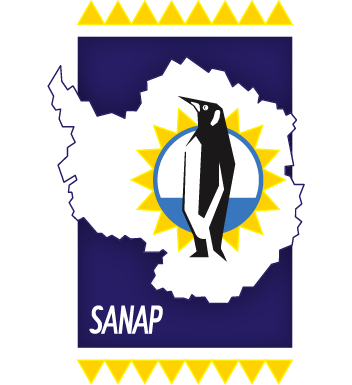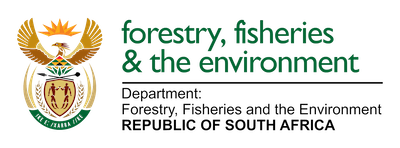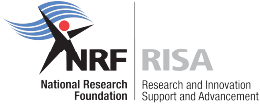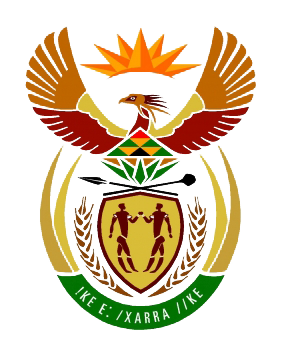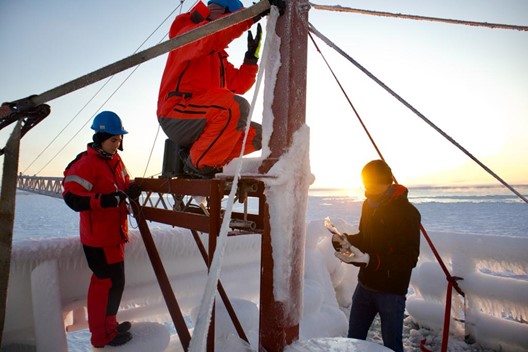
by Ria Olivier | Jul 27, 2022 | Antarctica, Current Event, Engineering, Research, SA Agulhas II, SANAP, Science, Southern Ocean, STEM
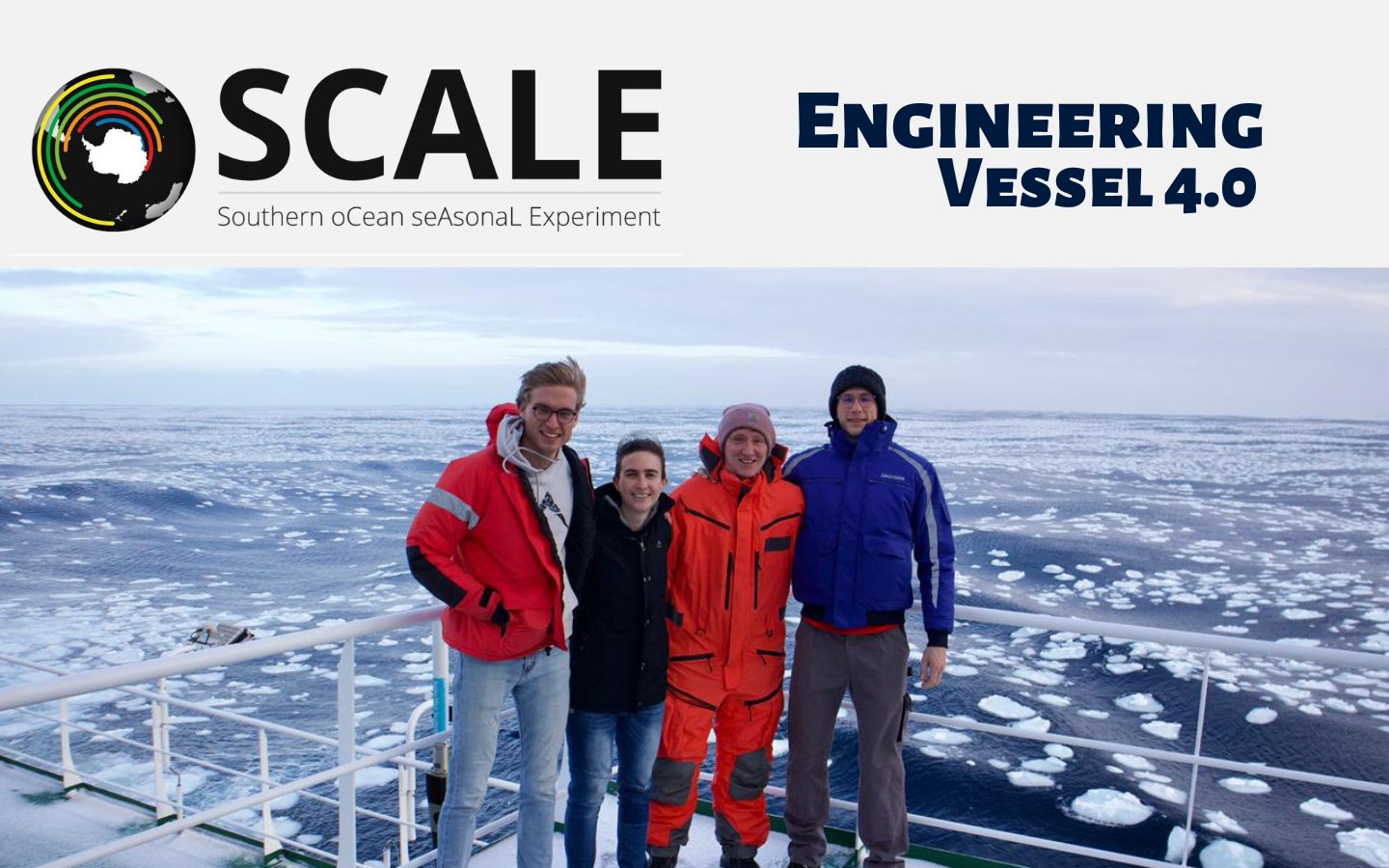
Vessel 4.0 team photo in marginal ice zone. In the photo (left to right): Christof van Zijl, Nicole Taylor, Marek Muchow and Markus Gilges.
| TEAM | VESSEL 4.0 |
| Project name | The Digital SA Agulhas II – Flagship for Vessel 4.0 |
| Principal Investigator | Annie Bekker | Stellenbosch University |
Onboard team members:
| Team Member | Role | Affiliation |
| Nicole Taylor | PhD
Onboard Team Leader | Stellenbosch University |
| Marek Muchow | PhD | Aalto University (Finland) |
| Christof van Zijl | PhD | Stellenbosch University |
| Markus Gilges | PhD | RWTH Aachen University (Germany) |
More about the team and the project:
Nicole and Christof of the Sound and Vibration Research Group of Stellenbosch University, in collaboration with Markus of the HealthProp consortium and Marek of Aalto University, comprise the Vessel 4.0 team. The aim of Team Vessel 4.0 is to investigate the responses of the S.A. Agulhas II as she travels through open water and sea ice during SCALE Winter Cruise 2022.
The S.A. Agulhas II is instrumented with a multitude of sensors, like accelerometers and strain gauges. These sensors function like an internal nervous system, enabling the Vessel 4.0 team to “sense” each vibration and motion of the ship as she breaks through waves and sea ice. So far, the S.A. Agulhas II has had to endure repeated “belly-flops” as she slams into incoming waves (see image below), as well as noteworthy rolling and pitching motions as she climbs and descends large swells on her journey through the Southern Ocean.
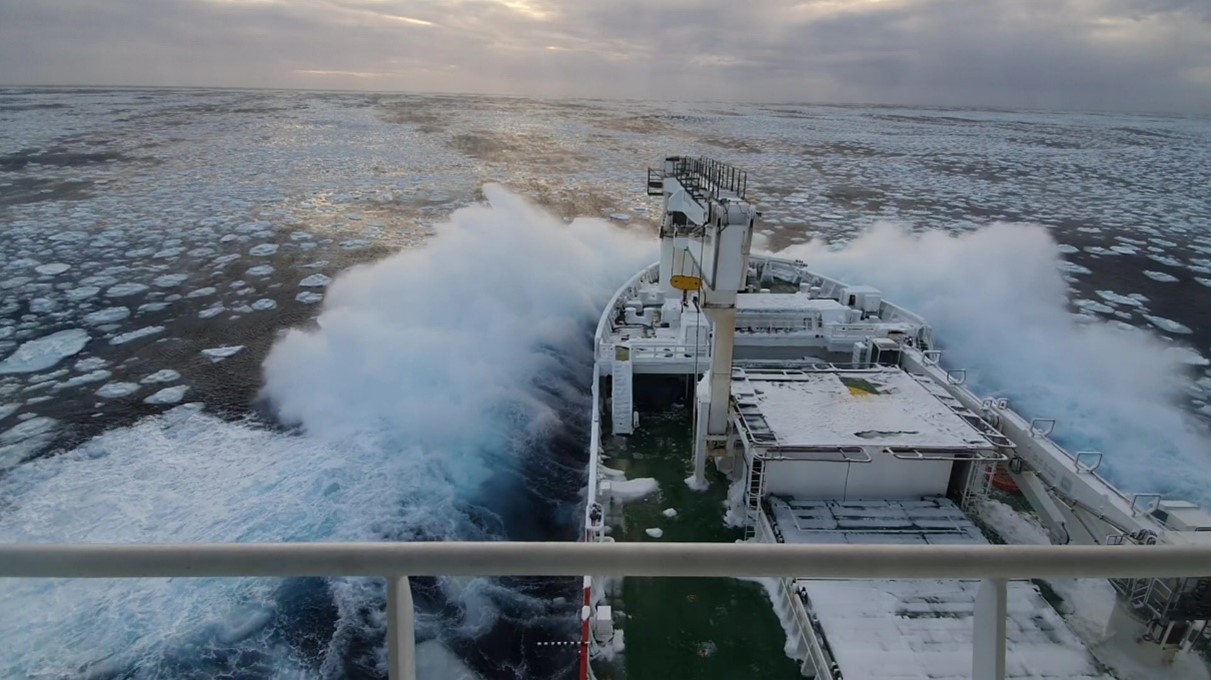
The S.A. Agulhas II in a bow slam while in the marginal ice zone (MIZ). Photo Credit: Nicole Taylor.
The team is particularly interested in studying the loads that the ice and waves cause to the hull and propulsion system of the ship. They perform engineering analyses of measurements from the hull and propulsion system to understand how intensively the Southern Ocean and its sea ice require the S.A. Agulhas II to work while navigating through winter conditions. In the image below (left), Markus is shown monitoring his measurement system located in the shaft line.
Additionally, the team is performing visual observations of the sea and ice state around the S.A. Agulhas II throughout the time of the cruise. It helps to record details about the environment that the ship encounters so that the team members have a clearer picture of what the installed nervous system is sensing. Team members spend hours being the “eyes” of the nervous system, writing down metrics like what the wave height and the direction of the main wave train is when in open water, or, when in ice, how thick the ice is and what type of ice the ship is breaking through. Christof is shown seated in the bridge while recording the sea ice conditions in the image above (right). The ice observations are done 24/7 while they are in the marginal ice zone with spotlights on during the night.
The team also uses other instruments, like cameras and lasers, to take measurements and snapshots of the ship’s environment. These really help when working through the measurements and visual observations back in the office after the cruise to understand what happened on board. In the image below Marek, Nicole and Christof are shown in the process of installing an ice thickness measurement system at the bow of the ship.

Ice thickness measurement system installation. In the photo (l-r): Nicole Taylor, Marek Muchow and Christof van Zijl. Photo credit: Kurt Martin.
Along with carefully studying the ship and the environment she interacts with, the team has recruited passengers to participate in their human response research to better understand how people experience living and working on board. During Winter Cruise, the team has distributed custom-developed human-centric software in conjunction with more traditional questionnaires. Through the Mariner 4.0 mobile application and daily diary booklets, participants are equipped to record their daily perception of vibration, noise and motion that may cause them discomfort or illness. The Mariner 4.0 application enables real-time data capturing and analysis on board that has a greater aim to support monitoring and managing of human activities. For example, this could be used to assist with planning research on board and navigation decisions to maximize the time during which researchers are estimated to be the least motion sick and able to work well.
 Read more about the research that Team Vessel 4.0 team members are part of:
Read more about the research that Team Vessel 4.0 team members are part of:
Text supplied by Team Vessel 4.0
Featured images supplied by Kurt Martin (SAPRI trainee)
Anche Louw, Antarctic Legacy of South Africa, 27 July 2022

by Ria Olivier | Jul 27, 2022 | Antarctica, Current Event, Oceanography, Research, SA Agulhas II, SANAP, Science, Southern Ocean, STEM
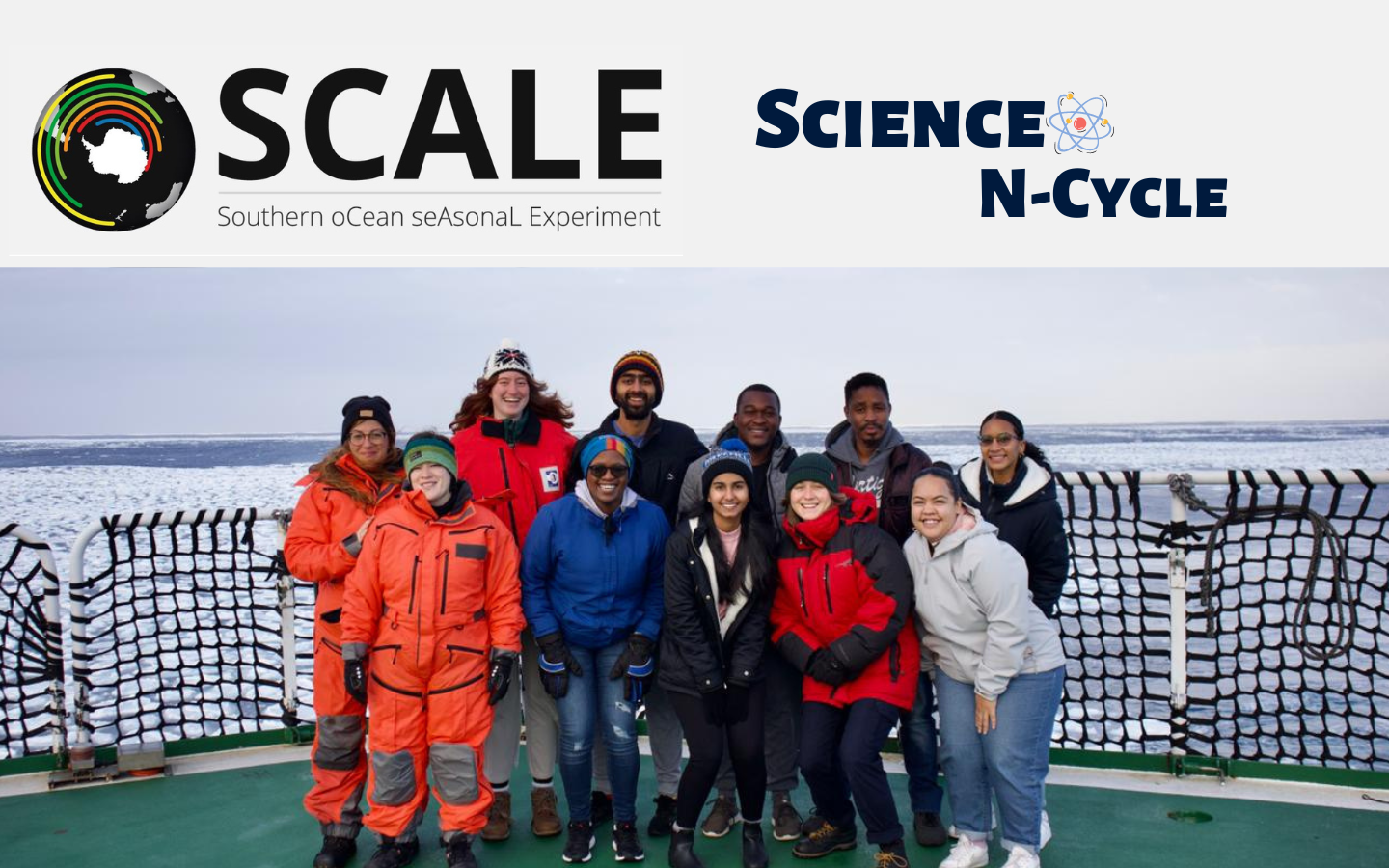
N-Cycle team onboard the S.A. Agulhas II. Back (left to right) Letizia Tedesco, Christina Monteiro, Brishan Kalyan, Nkateko Maholobela, Mhlangabezi Mdutyana, Aldean Esau; (front) Lumi Haraguchi, Sizwekazi Yapi, Sadiyah Rawat, Amelia Deary, Venecia van Balla.
| TEAM | N-CYCLE |
| Project name | Nitrogen cycle in the Southern Ocean |
| Principal Investigator 1 | Sarah Fawcett | University of Cape Town (UCT) |
| Principal Investigator 2 | David Walker | Cape Peninsula University of Technology (CPUT) |
Onboard N-CYCLE team members:
| Team Member | Role | Affiliation |
| Mhlangabezi Mdutyana | Team Leader | UCT
|
| Amelia Deary | MSc | UCT
|
| Sizwekazi Yapi | MSc | UCT
|
| Christina Monteiro | Honours | UCT
|
| Sadiyah Rawat | Honours | UCT
|
| Lumi Haraguchi | Postdoc | SYKE, Finland
|
| Aldean Esau | Honours | CPUT |
| Venecia van Balla | Honours | CPUT |
| Nkateko Maholobela | Honours | CPUT |
| Brishan Kalyan | MSc | NMU
|
| Letizia Tedesco | Researcher | SYKE, Finland |
The project description as per the sailing orders for the SCALE Winter Cruise of 2022:
Thirty years ago, John Martin proposed that the high nitrate concentrations left unconsumed in Southern Ocean (SO) surface waters result from iron-limitation of phytoplankton growth. Extensive culture and (CPUT) fieldwork has since confirmed the central role of iron in photosynthesis and nitrate assimilation. Because of the implications for CO2, most studies of coupled iron and nitrogen (N) cycling have focused on nitrate assimilation, with little attention paid to the role of iron in mixed-layer N (re-)cycling. Our preliminary data suggest that iron availability exerts a strong control on N regeneration; if verified, this has implications for our mechanistic understanding of the N cycle, now and in the future when the iron supply to the surface SO is predicted to rise.
On this cruise, we plan to interrogate the role of iron in the upper SO N cycle at high resolution through extensive iron amendment experiments. We will also examine the composition and functioning of the associated planktonic (auto-, mixo- and heterotrophic) community. Diverse aspects of Southern Ocean physics and chemistry are already experiencing climate-induced changes; a major motivation for this work is to develop expectations for Southern Ocean fertility and ecology in response to such changes. This work is also relevant for the nutrient supply to the low-latitude ocean, which is controlled by both the extent of nutrient uptake in Southern Ocean surface waters and the ratios in which these nutrients are consumed; the latter is strongly affected by iron availability and plankton species composition.
Cape Peninsula University of Technology students, under the supervision of Dr David Walker, will be investigating chlorophyll-a concentrations and phytoplankton assemblages at all the CTD and process stations, as well as in ice core samples.
Follow Dr Fawcett on Twitter and check out the Marine Biogeochemistry Lab website (links below).


Text and images supplied by the N-Cycle team and Kurt Martin (SAPRI Trainee)
Anche Louw, Antarctic Legacy of South Africa, 27 July 2022.
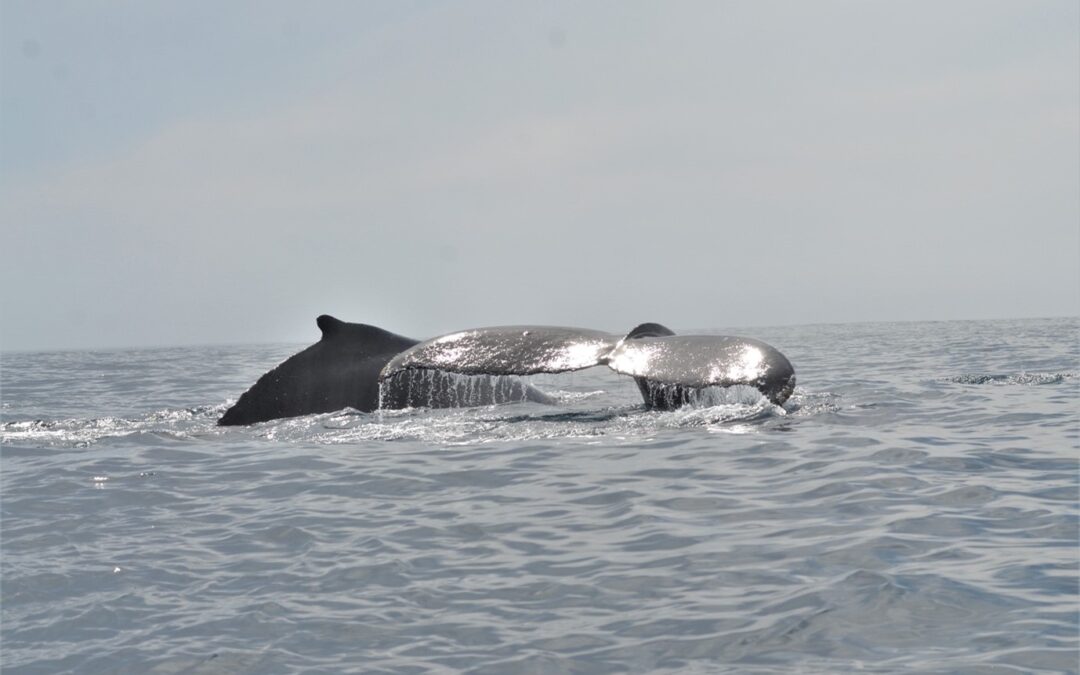
by Ria Olivier | Jul 26, 2022 | Antarctica, Current Event, Research, SA Agulhas II, SA Polar Research Infrastructure, SAPolarRI, Science, Southern Ocean, STEM
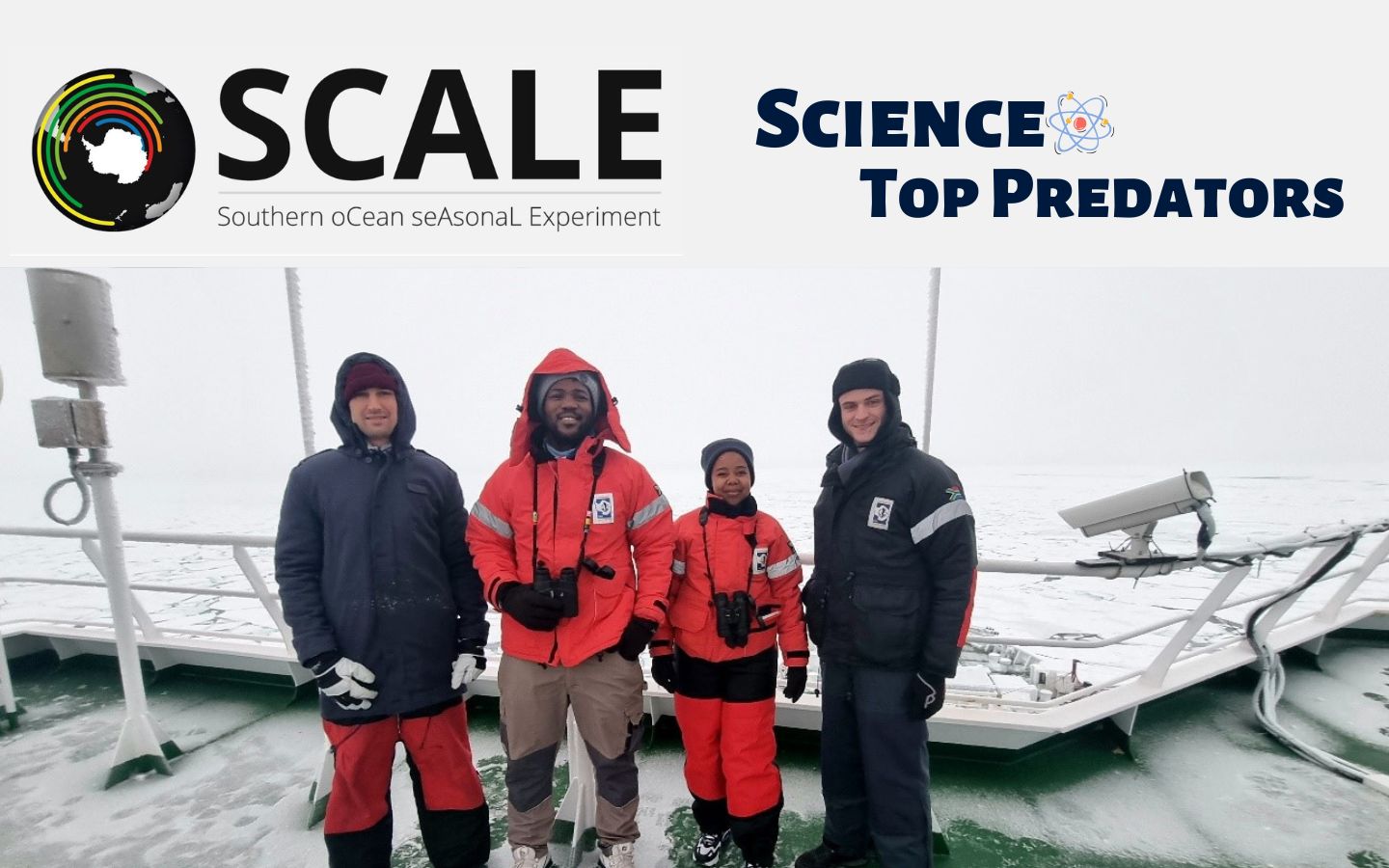
Top Predator team for seabirds and marine mammal observations during SCALE cruise 2022: (left to right) Matthew Germishuizen, Makhudu Masotla, Mpumalanga Mnyekemfu, and Estefan Pieterse.
| TEAM | TOP Predators |
| Project name | Top predator assemblages, distribution and abundance in the Southern Ocean |
| Principal Investigator | Azwianewi Makhado | Department of Forestry, Fisheries and the Environment (DFFE), Branch: Oceans and Coasts |
Onboard Top Predators team members:
| Team Member | Role | Affiliation |
| Makhudu Masotla | Team Leader
Research fellow
eDNA, Plastic pollution, At sea observer
| Department of Forestry, Fisheries and the Environment |
| Mpumalanga Mnyekemfu | Seabirds At sea Observer | Department of Forestry, Fisheries and the Environment |
| Matthew Germishuizen | Mammals At sea observer | Mammal Research Institute, University of Pretoria |
| Estefan Pieterse | Mammals At sea observer | Mammal Research Institute, University of Pretoria |
More about the project:
Seabirds and marine mammals are often the early indicators of changes in an ecosystem and display the effects of climate change vividly. Their distribution can be grouped into assemblages; which are species occurring in space and time. Ocean currents, physical and chemical forces generate nutrients necessary for primary productivity that accumulates biomass. These create hot spots of ecologically important zones for seabirds, marine mammals and several other marine taxa. There is a direct linkage of these structures to seabed topography, physical water properties and some oceanographic processes, such as fronts, eddies and local upwellings. Prey availability is mostly influenced by these features, therefore it is expected for top predators, such as seabirds to be found in these areas.
The overarching purpose of this expedition was to collect distribution and abundance data on seabirds, and marine mammals. We envisage several conservation applications using data that this project should generate, such as to define ‘ocean hotspots’, where visible marine life (such as seabirds or cetaceans) congregate in relative abundance and with some degree of consistency. Further objectives are to identify important areas for highly threatened species such as albatross and petrels. These areas might become marine Important Bird Areas or contribute to the designation of Marine Protected Areas, special nature reserves on the high seas, and no-take zones to protect sensitive species from commercial fishing. The additional aim is to determine the distribution and abundance of seabirds and marine mammals in the southern ocean in relation to a number of different environmental variables (e.g. surface temperature, chlorophyll, fronts, etc.) in order to address the knowledge gap around their at-sea movements in our study area.
Acoustic data
Antarctic krill Euphausia superba is a keystone species in the Antarctic ecosystem as it is prey to various top predators i.e. seabirds, whales, seals, and fish. To establish predator-prey relationships between marine mammals/seabirds and krill, acoustic data will be collected from three transducers (i.e. 38, 120 and 200 kHz) mounted on the drop keel of the SA Agulhas II. The data collection will not interfere with any other scientific operations and will be autonomously logged. Information produced by this study will give relative abundance and distribution of krill relative to the visually observed seabirds and marine mammals. This information will also be crucial for the management and conservation of different endangered marine animals.
Environmental DNA (eDNA) detection represents a powerful tool for assessing aquatic biodiversity and for the efficient detection of “hard-to-find species,” including top predators. Detection of a species-specific eDNA sequence implies the presence of this species in a certain area. Knowledge of prey items established using metabarcoding within the scats, guano, pellets, stomachs and regurgitates of mid-level and high-level components of the food web may highlight spatial differences in diet, behavior, or environmental pressure. Metabarcoding has the potential to assess the presence of hundreds of species in both the environment and the diet of predators. The top predators team will therefore be collecting eDNA samples towards the fulfillment of the metabarcoding objective.
Text and images: AB Makhado, M Seakamela, M Germishuizen, M Mnyekemfu, E Pieterse and MM Masotla.
Anche Louw, Antarctic Legacy of South Africa, 26 July 2022.
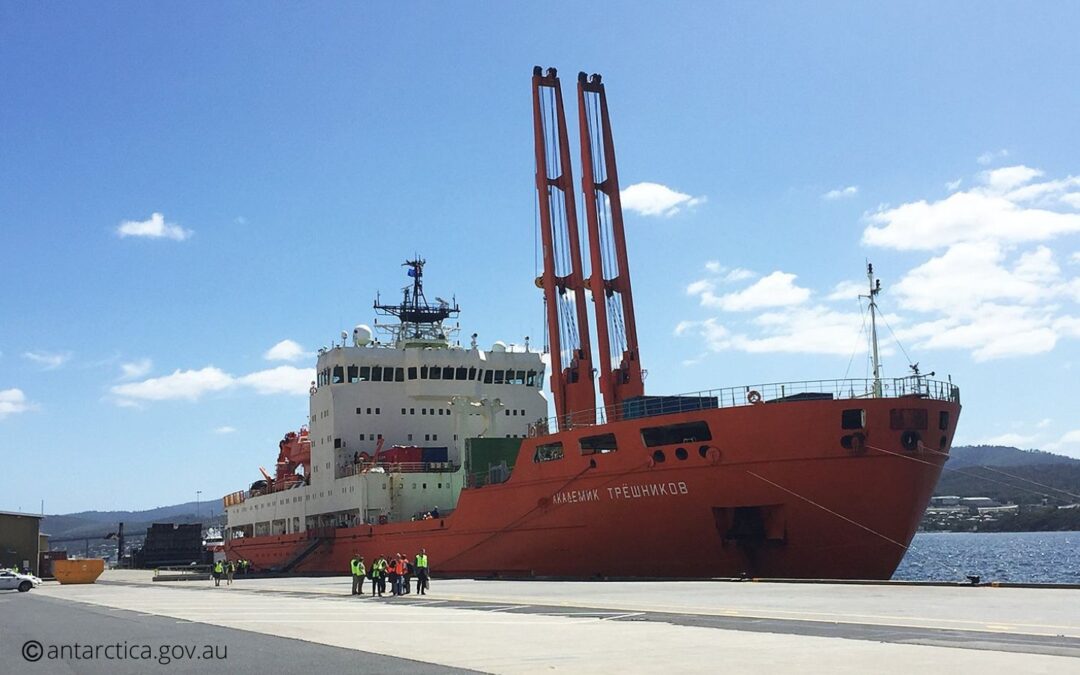
by Ria Olivier | Jul 25, 2022 | Announcement, Antarctica, Research, SCAR, Science, Southern Ocean, STEM
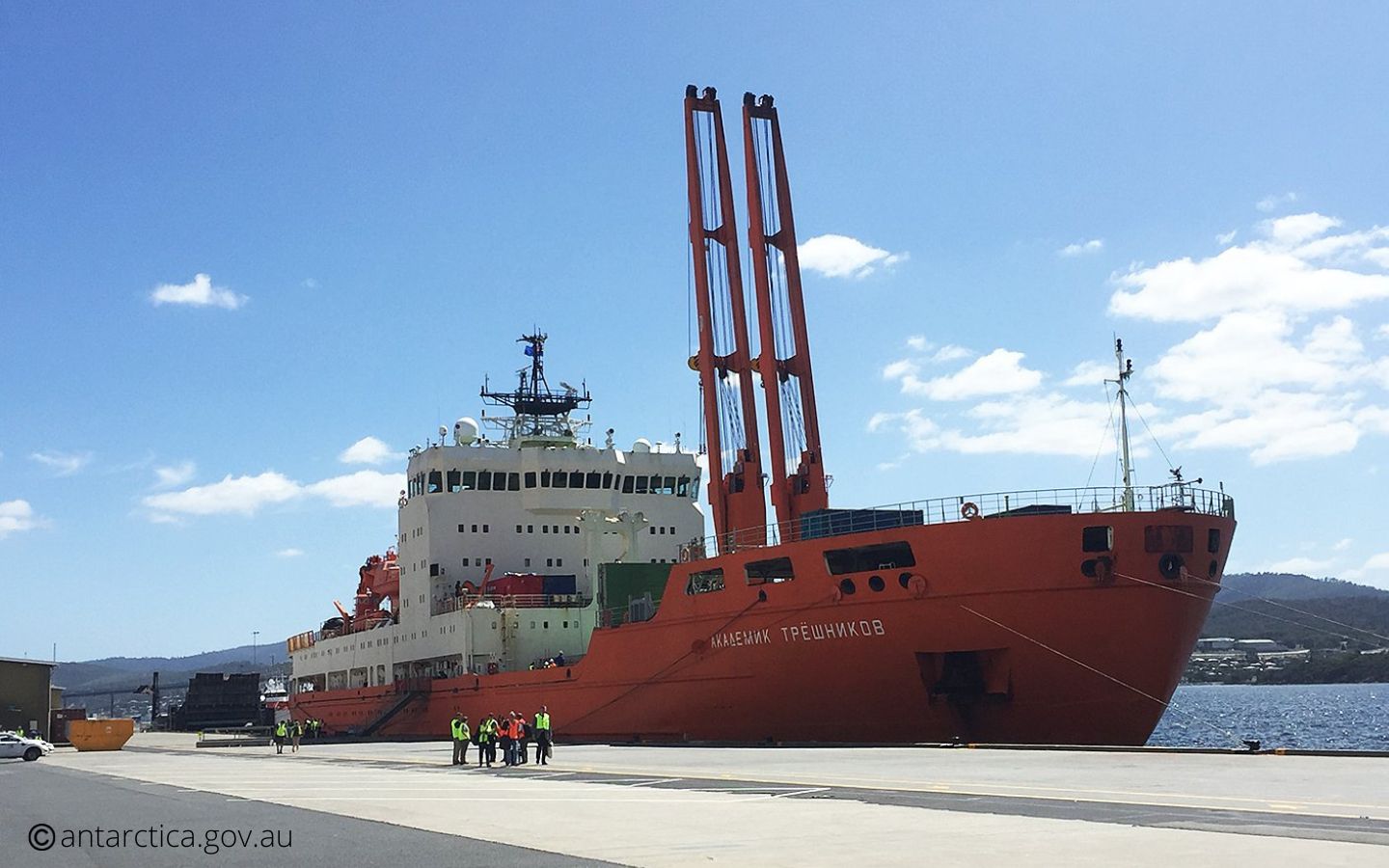
The National Research Foundation has been approached by the Switzerland-based Group, Polar Holdings AG, which has recently acquired both South African companies “Antarctic Logistics Centre International” and “The Antarctic Company” to assist in coordinating South African scientists on a possible circumnavigation expedition to Antarctica.
Vessel: RV Akademik Tryoshnikov
Departure: early December 2022 (approximately sixty (60 days) charter)
Number of berths available: approximately twenty (20)
Cruise Plan:
Departing from: Cape Town
Departing to: The AT will sail to the vicinity of the Neumeyer Station and end its expedition in the Ross Sea. The AT will then sail to Punta Arenas in Chile where participants will disembark.
Polar Holdings AG needs an indication of interest from the South African community before finalising the charter.
Expression of interest deadline: 28 July 2022
Click here for more information.
Text: Tracy Klarenbeek, Director: Knowledge Advancement and Support, National Research Foundation.
Anche Louw, Antarctic Legacy of South Africa, 25 July 2022.
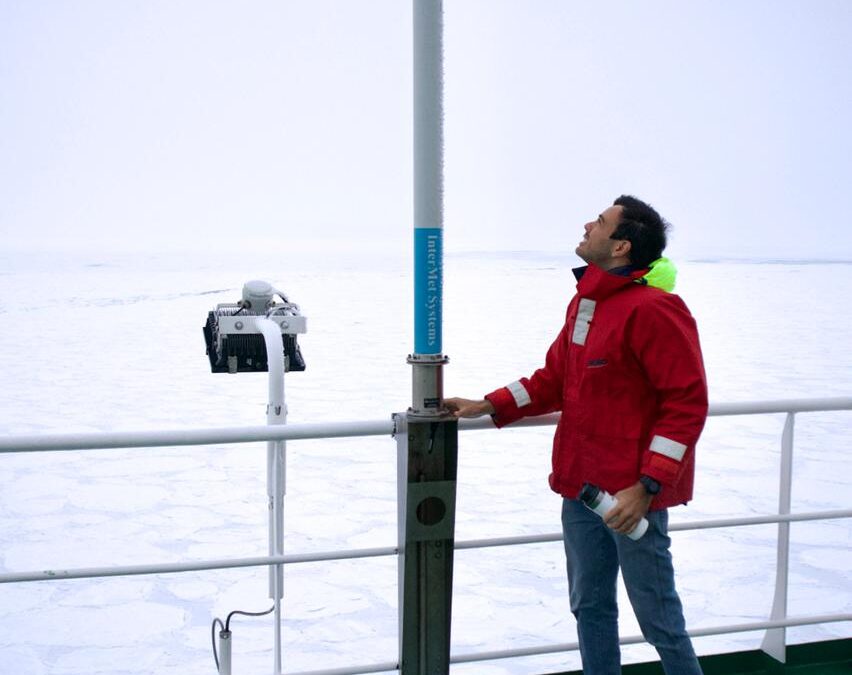
by Ria Olivier | Jul 22, 2022 | Antarctica, Current Event, Meteorology, Research, SA Agulhas II, SANAP, Science, Southern Ocean, STEM
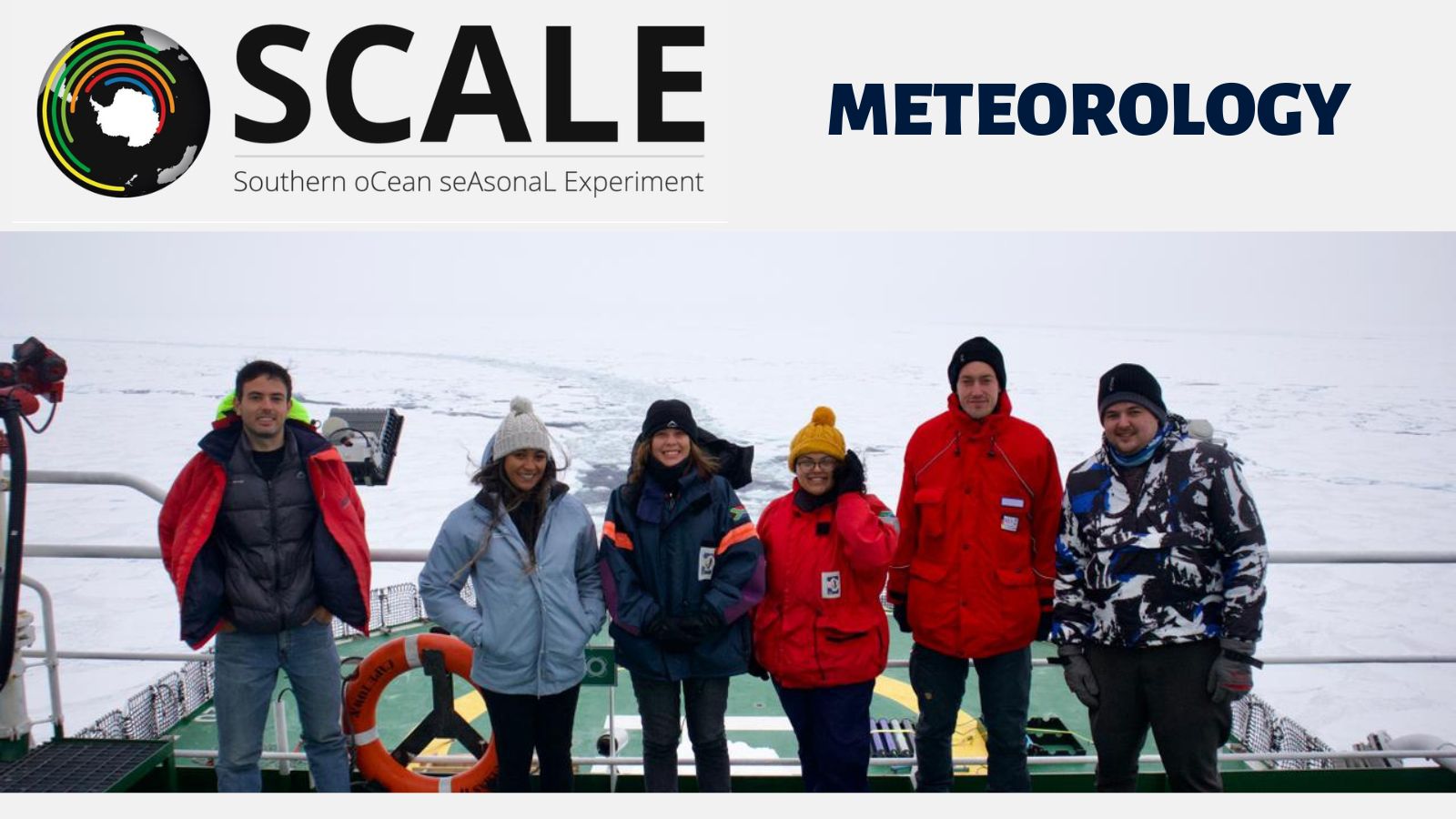
METEO team: (L-R): Marc, Carla, Taygan, Shaakirah, Berhnard and Mark.
| TEAM | Meteorology |
| Project name | Operational Marine Meteorology |
| Principal Investigator 1 | Tamaryn Morris | South African Weather Service (SAWS) |
| Principal Investigator 2 | Marc de Vos | SAWS |
Onboard METEOROLOGY team members:
| Team Member | Role | Affiliation |
| Marc de Vos | Onboard Team Leader | SAWS |
| Carla-Louise Ramjukadh | Meteo analyst/technician | SAWS |
| Mark Fourie | Forecaster | SAWS |
| Berhnard Schmitz | Ice analyst/technician | SAWS/AWI (Germany) |
| Ocean Obs team collab with METEO |
| Taygan Roberts | XBT, Argo float and drifter deployments | CPUT |
| Shaakirah Sulaiman | XBT, Argo float and drifter deployments | CPUT |
The project description as per the sailing orders for the SCALE Winter Cruise of 2022:
The Operational Marine Meteorology project includes routine (operational) and R&D (research and development) activities related to the collection, processing, and provision of marine environmental information to support primarily safe marine navigation and activity, and support weather-climate research. Specific outcomes for SCALE Winter 2022 include: 1) Provision of relevant and accessible met-ocean (meteorological and oceanographic) forecast information to bridge and science teams to assist navigation and science planning. 2) Training of personnel with respect to marine forecasting and vessel support. 3) Production of a set of standard along-track meteorological measurements & observations for the cruise to support decision-making and for supporting use in other research. 4) Deployment of instrumentation to enhance assimilation of Southern Ocean data into global numerical weather/ocean prediction models (limited w.r.t data denial experiments). 5) Observations of sea ice related to ground truthing of sea ice edge analysis and forecasting. 6) Post-cruise assessment of global NWP performance along cruise track.
Images supplied by Kurt Martin, SAPRI trainee.
Anche Louw, Antarctic Legacy of South Africa, 22 July 2022.
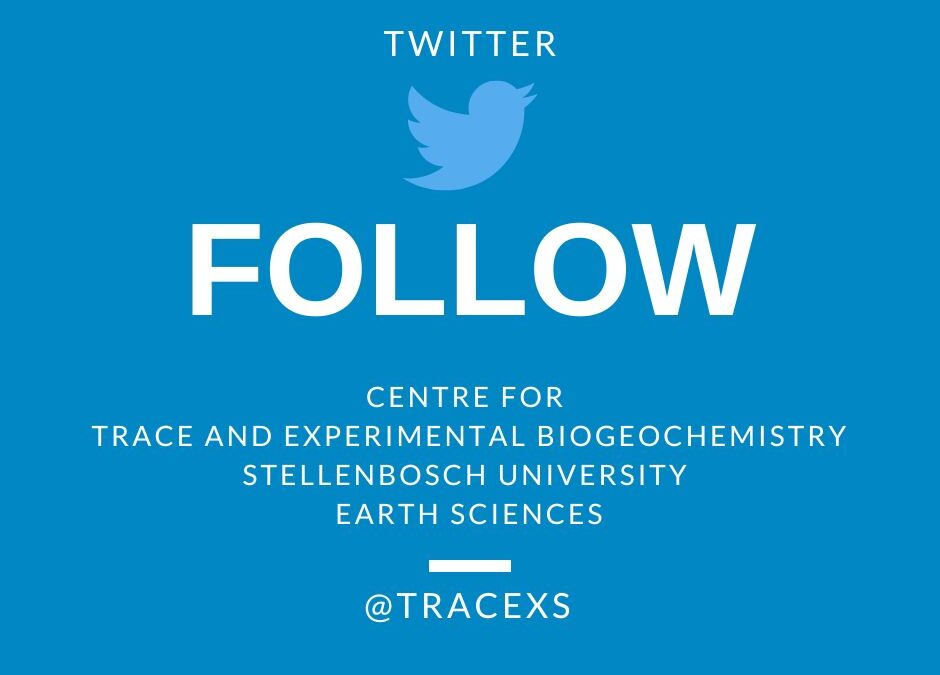
by Ria Olivier | Jul 20, 2022 | Antarctica, Current Event, Environment, Research, SA Agulhas II, SA Polar Research Infrastructure, SANAP, SAPolarRI, Science, Southern Ocean, STEM
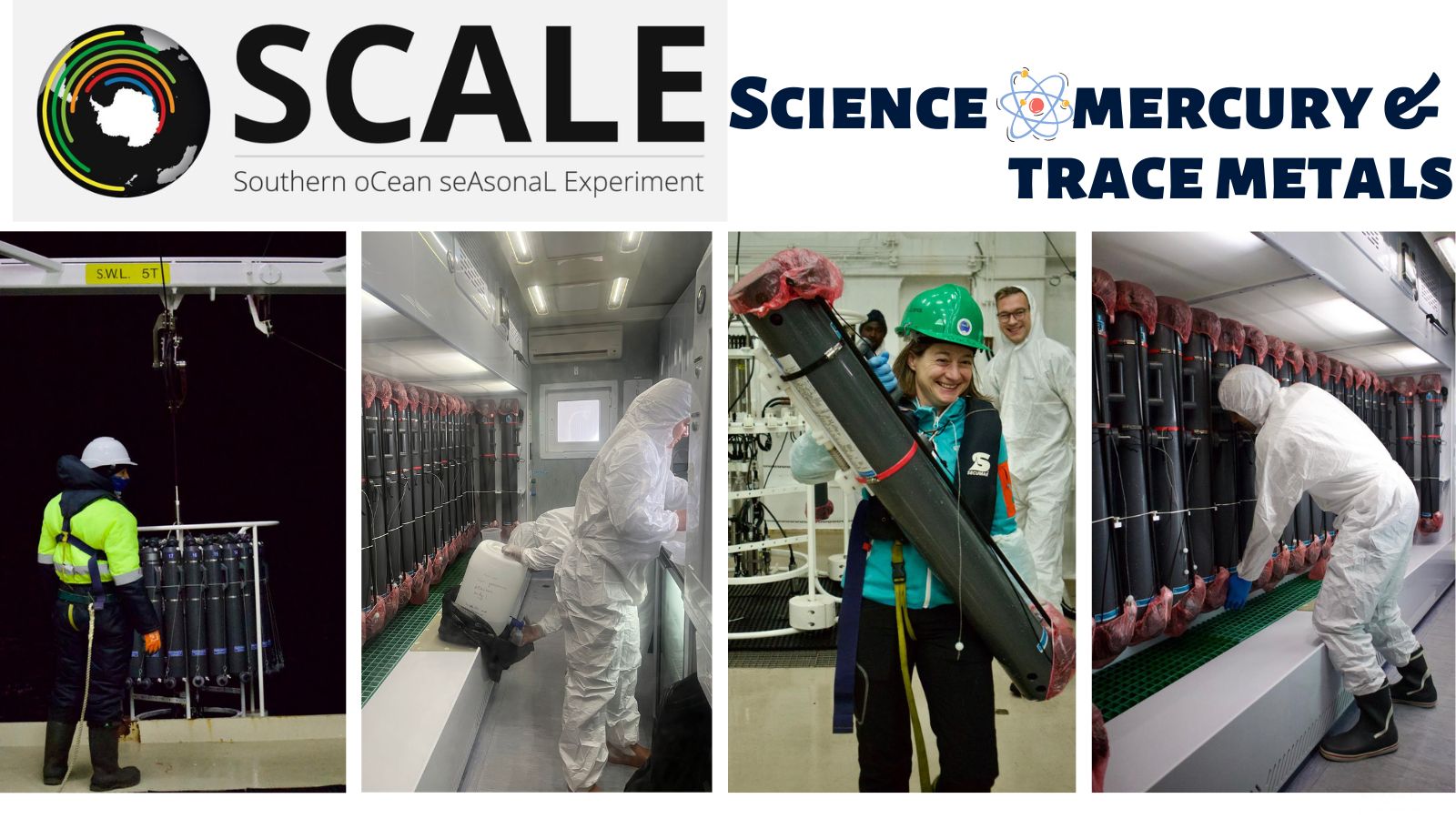
| TEAM | MERCURY & TRACE METALS |
| Project name | Knowledge and technology transfer to investigate marine mercury contamination |
| Principal Investigator 1 | Susanne Fietz | Stellenbosch University (SU) |
| Principal Investigator 2 | Lynwill Martin | South African Weather Service (SAWS) |
| Principal Investigator 3 | Lars-Eric Heimbuerger | CNRS-MIO |
Onboard MERCURY & TRACE METALS team members:
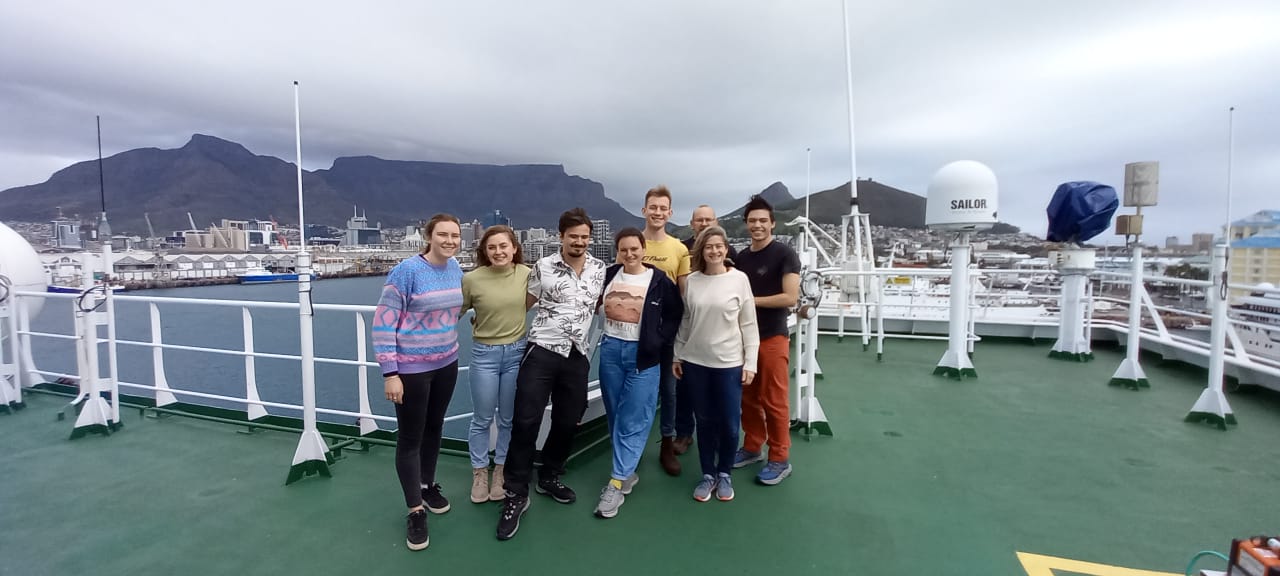
Front (L-R): Kayla, Lide, David, Sonja, Susanne; (back) Liam, Casper, and Jared.
| Team Member | Role | Affiliation |
| Susanne Fietz | PI and Onboard Team Leader | SU |
| Liam Quinlan | MSc | SU |
| Jared Walsh | MSc | SU |
| David Amptmeijer | PhD | GMOS, Europe |
| Sonja Gindorf | PhD | GMOS, Europe |
| Casper Labuschagne | MSc | SAWS |
| Kayla Buchanan | Honours | SU |
| Lide Janse van Vuuren | MSc | SU |
More about their research:
Mercury is a natural element and its biogeochemical cycle is heavily altered by anthropogenic activities. Over the past two decades, it became clear that processes in seawater are largely responsible for the conversion from inorganic mercury to the bioaccumulative neurotoxin methylmercury, which accumulates up marine food chains. This is of special concern as globally the main pathway of human exposure to methylmercury is via the consumption of seafood.
The #SCALEwin22 expedition is extremely valuable to better understand mercury dynamics in the Southern Ocean. Observations from this region are rare, especially observations during winter. Sonja and David are both doctoral students within the “Global Mercury Observation and Training Network in Support of the Minamata Convention”, a Marie-Curie training network involving several institutions all over Europe. Together with the TraceEx team from Stellenbosch University: Susanne (Senior Lecturer at the Department of Earth Sciences), Lide, Kayla, Caspar, Liam, and Jared, water and ice core samples will be taken, for mercury speciation and dissolved trace metals.
In the water and ice, we are sampling for oxygen and deuterium isotopes, different dissolved organic matter parameters, and persistent organic pollutants to relate mercury biogeochemistry to different anthropogenic and environmental factors. Moreover, we sample for genes that are relevant in mercury (de-)methylation (see purging process below).
All our samples and work onboard are following trace metal clean protocols. Trace metal sampling in itself is tricky! We take a wide range of measures to keep our samples uncontaminated: we wear protective gloves, sleeves, and coveralls, and all our work happens in a metal-clean container.
During this voyage, the project also aims to transfer important skills to improve our understanding of the mercury cycle to South Africa. This project thus trains young researchers, transfers analytical skills, and provides data for an improved understanding of mercury cycling.
More about the sampling:
Gaseous mercury will be measured in the atmosphere during the transect as well as total, dissolved gaseous, and methyl-mercury (see video and image below) in the ocean. In addition, we will sample frazil ice, unconsolidated and consolidated ice for the mercury content. The assessment of the mercury levels is accompanied by measurements of the phytoplankton and microbial community structure and also other trace metals in our collaborative work.
Scan this QR code below with your smartphone’s camera (or click on the image) to view the water sampling process.
VIDEO: CTD (Conductivity, Temperature, and Depth) deployment and recovery with GoFlo tubes. This is the process of collecting water samples at specific depths. After recovery, the water-filled GoFlo tubes are removed from the frame (filled with water collected from a specific depth) and moved to the trace metal testing clean lab.
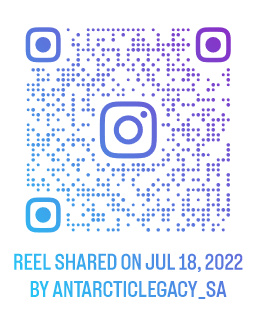
Purging is the process of measuring methylmercury in water. In the image below, David (GMOS programme) and Casper (SAWS) are setting up for purging a methylmercury sample.
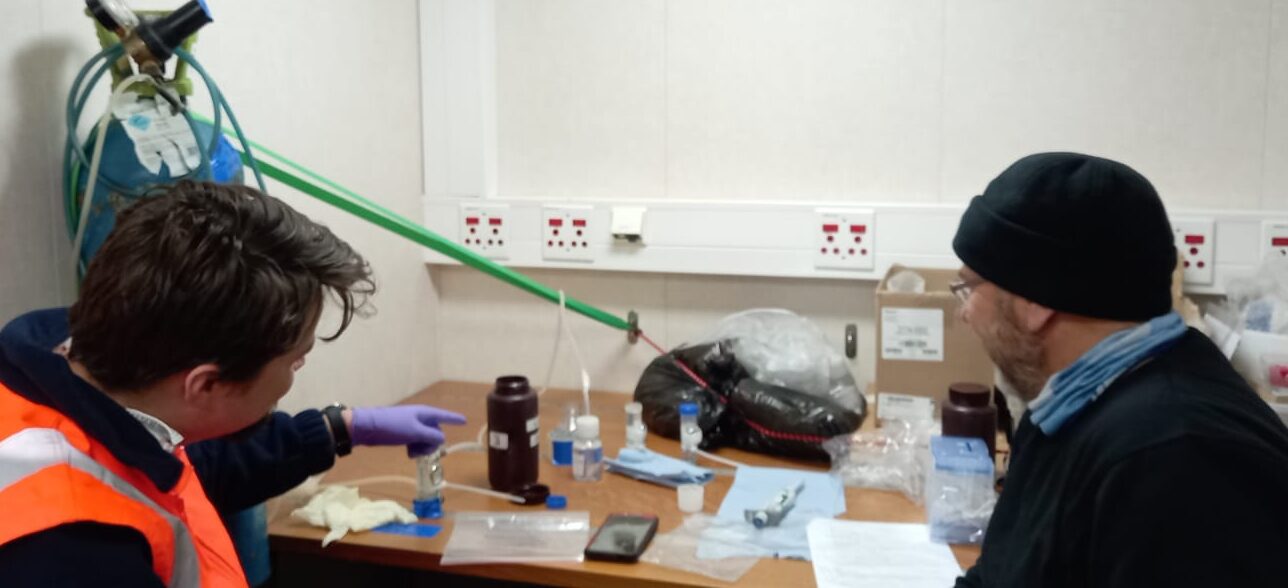
In this video: The purging process. One methylmercury species are outgassed and other species are left behind.
More Pictures
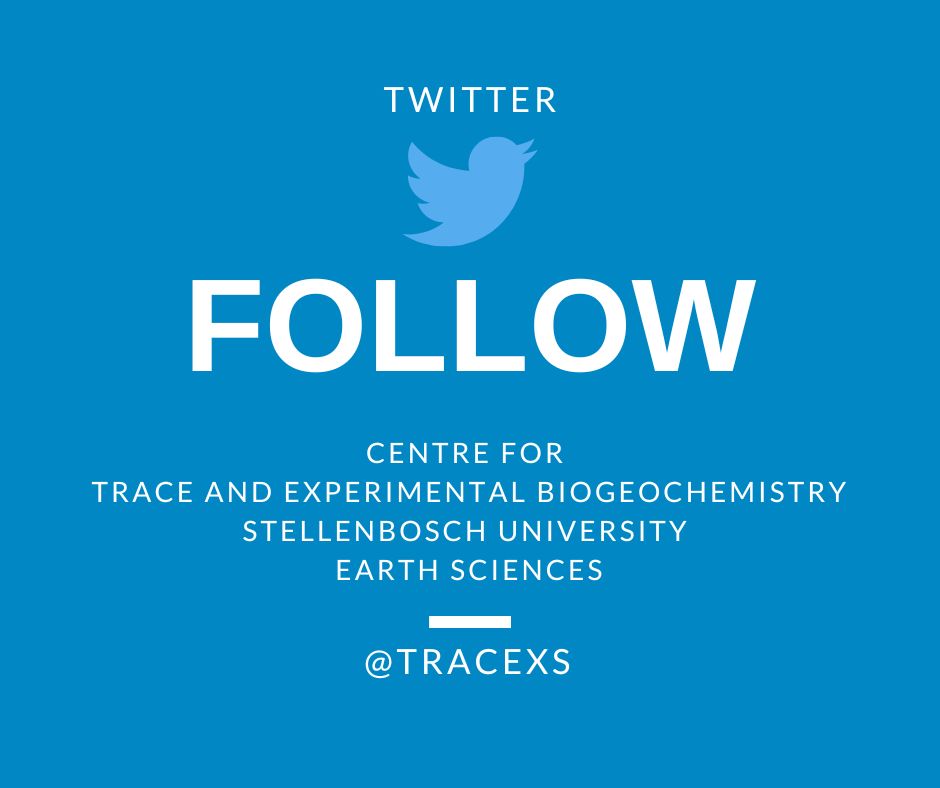
Text supplied by Susanne Fietz (PI and onboard team leader) and Sonja Gindorf. Images supplied by Susanne Fietz, Sonja Gindorf and Kurt Martin (SAPRI Trainee).
Featured Image: L-R: CTD recovery; postgrads working in the clean lab; Susanne carrying GoFlo tube to clean lab, after recovery; tubes being stored in the clean lab.
Anche Louw, Antarctic Legacy of South Africa, 20 July 2022




![]() Read more about the research that Team Vessel 4.0 team members are part of:
Read more about the research that Team Vessel 4.0 team members are part of: